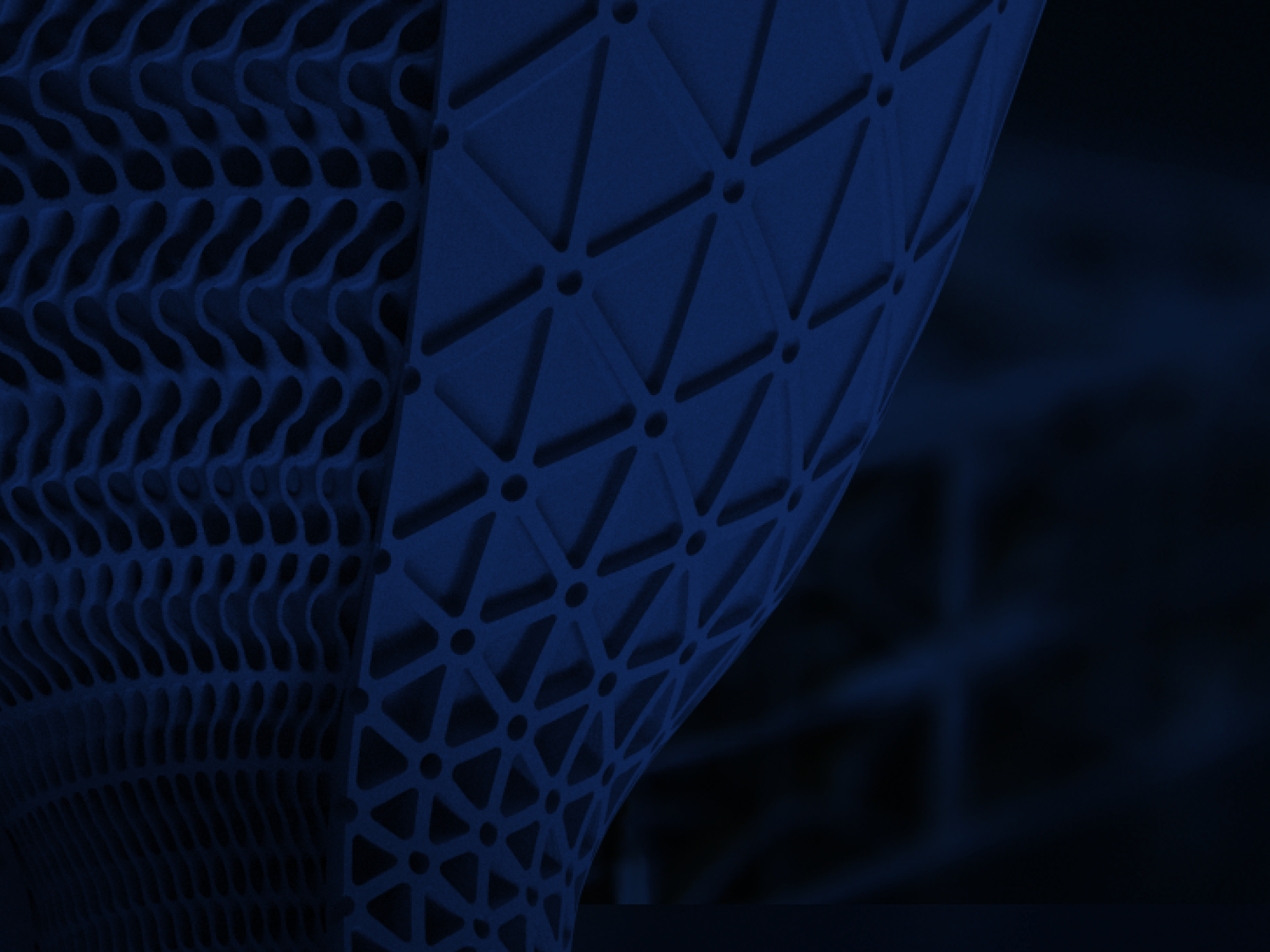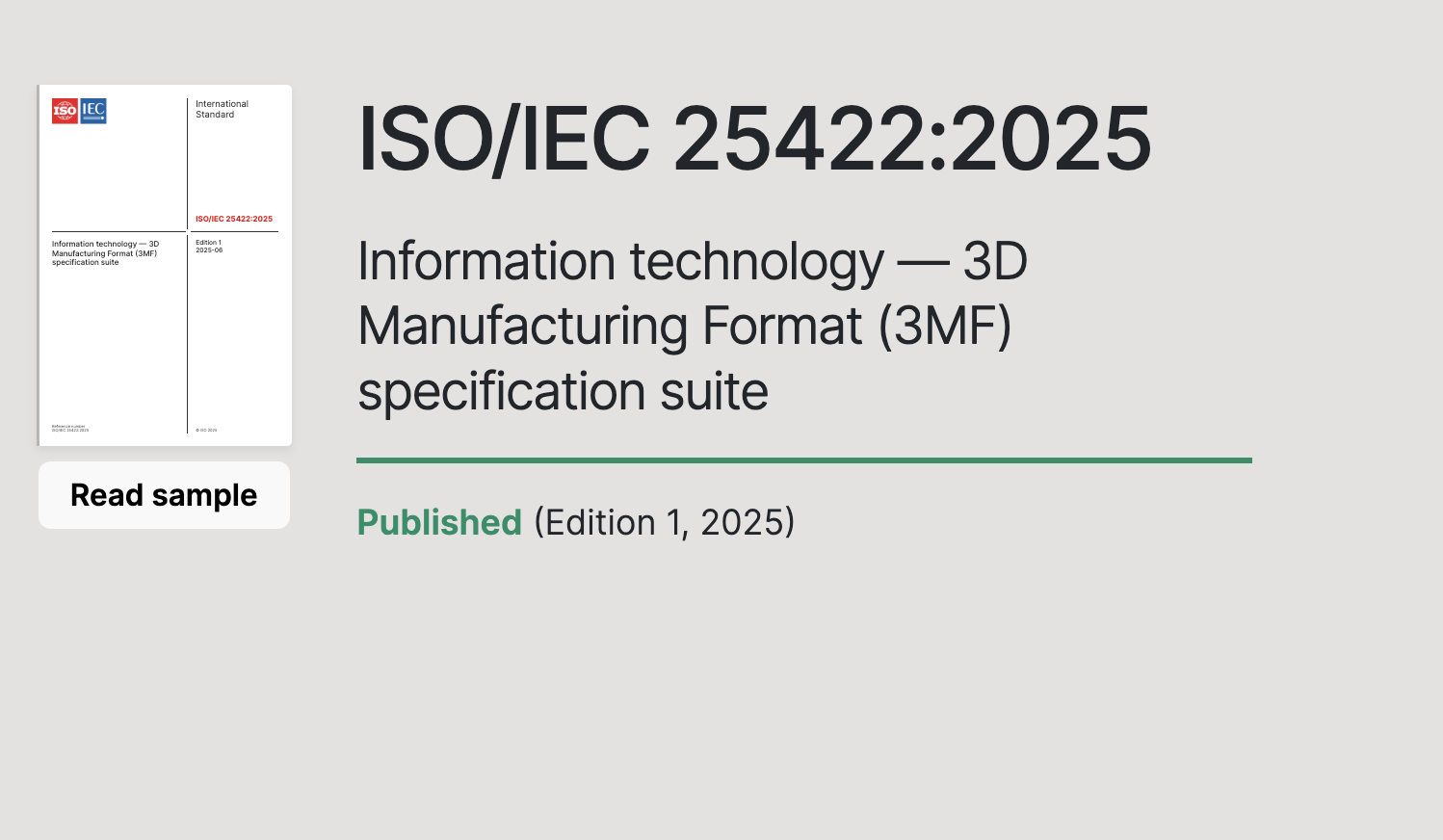3MF: An ISO Standard for the Future of Manufacturing
The 3MF Consortium is thrilled to announce a landmark achievement in additive manufacturing: 3MF has officially been recognized as an ISO standard (ISO/IEC 25422:2025).
This milestone crowns nearly a decade of dedicated work by the Consortium’s Steering Committee, an alliance of leading software vendors, hardware manufacturers, service bureaus, and end-use OEMs who have collaborated to refine, validate, and future-proof the format.
Through countless engineering hours, public draft iterations, and cross-industry pilot projects, the committee ensured that 3MF captures every critical detail required for high-fidelity additive manufacturing.
The new ISO designation not only validates that effort but also cements 3MF’s position as the definitive, free and open source, vendor-neutral standard for secure, interoperable AM data across the global manufacturing landscape.
“Transposing the 3MF specification into an ISO/IEC standard is more than a technical milestone—it’s a strategic enabler for global adoption. This achievement reflects the power of collaborative standardization and positions 3MF as a foundational format for the future of additive manufacturing.”
Muhammad Ali, ISO/IEC JTC 1 PAS Mentor
What is 3MF?
3MF (3D Manufacturing Format) is an XML-based data format designed specifically for additive manufacturing. It addresses the shortcomings of older formats like STL by providing a richer, more comprehensive representation of 3D models.
This includes information about materials, colours, textures, and even support structures, all within a single file using the 3MF specification and extensions.
By capturing the full complexity of a 3D model, 3MF ensures that designs are translated accurately from concept to physical object, minimizing errors and streamlining the manufacturing process.
The Impact on the Manufacturing Industry
The adoption of 3MF as an ISO standard brings a new level of confidence and interoperability to the additive manufacturing ecosystem. This standardization will have far-reaching implications, fostering innovation, reducing barriers to adoption, and ultimately accelerating the widespread use of 3D printing in various industries.
Beyond mainstream manufacturing, the ISO-ratified 3MF standard is gaining traction in heavily regulated sectors where data integrity, traceability, and long-term accessibility are non-negotiable.
Government agencies and defense primes increasingly require additive-manufacturing vendors to deliver build files in a transparent, fully documented format; 3MF’s ability to embed rich metadata (material specs, process parameters, security classifications, revision history, and even encryption hooks) satisfies stringent ITAR, DFARS, and NATO STANAG documentation mandates while keeping the entire digital thread in a single container.
In medical device workflows, the format’s voxel, slicing, and support-structure extensions let engineers lock down patient-specific geometries and doctor-approved build settings, streamlining FDA submissions under ISO 13485 and MDR guidelines.
Likewise, aerospace OEMs and MRO providers value 3MF for its geometry fidelity and for the way it captures qualification data from powder-lot certificates to in-situ sensor logs, helping them meet AS9100 and NADCAP audit trails without resorting to brittle, proprietary toolchains.
Because the standard is maintained by a consortium of major software and hardware suppliers, end users in these mission-critical domains can count on backward compatibility and vendor neutrality for decades, which is essential when components may need to be reproduced or inspected far into the future.
In short, 3MF is emerging as the lingua franca not just for agile prototyping, but for any high-stakes environment where precision, compliance, and security intersect.
“Adopting and scaling additive manufacturing to create real, impactful solutions in manufacturing means overcoming long-standing hurdles. Seeing 3MF become an official ISO/IEC standard is a proud moment for all of us who work towards that future. At Materialise, we've been committed to this journey from the start, and I’m proud of the role our team played in making this milestone possible.”
Brigitte de Vet-VeithenCEO of Materialise NV
Key Benefits to 3MF ISO Include:
- Enhanced Interoperability: As an ISO standard, 3MF provides a universal language for 3D printing data. This means that design files can be seamlessly exchanged between different software applications, hardware platforms, and service providers, regardless of their origin. This reduces data translation errors and improves workflow efficiency across the entire supply chain.
- Increased Reliability and Accuracy: The comprehensive nature of the 3MF format ensures that all critical information about a 3D model is preserved. This leads to more accurate and reliable prints, minimizing the need for rework and reducing material waste. Manufacturers can have greater confidence that what they design is what they will produce.
- Accelerated Innovation: With a stable and widely adopted standard in place, developers and engineers can focus on innovating new technologies and applications, rather than on addressing data compatibility issues. This will spur the development of more advanced 3D printing processes and materials.
- Reduced Costs: By streamlining workflows, reducing errors, and improving interoperability, 3MF contributes to significant cost savings throughout the manufacturing process. This makes additive manufacturing more accessible and economically viable for a broader range of businesses.
- Future-Proofing: The 3MF Consortium remains committed to evolving the standard to meet the future demands of the additive manufacturing industry. The ISO designation ensures that 3MF will continue to be a robust and relevant format as the technology advances.
“For a decade, we’ve dedicated ourselves to standardizing additive data pipelines with the right craftsmanship. It’s incredible that 3MF is now the standard backend format for everything from millions of desktop FDM printers to multi-million-dollar aerospace equipment. Becoming an ISO standard is another important milestone in our journey to build a professional software ecosystem for Additive Manufacturing."”
Alexander OsterTechnical Director, 3MF Consortium
The 3MF Consortium invites every stakeholder in the additive manufacturing ecosystem, including software developers building CAD and workflow tools; hardware manufacturers advancing printers, scanners, and post-processing equipment; service bureaus delivering production at scale; and end users in industries from aerospace and medical to consumer goods, to help steer the next phase of this transformative standard.
By becoming a 3MF Consortium Member, you can contribute domain expertise to new extensions, join interoperability test beds, and ensure that 3MF continues to meet the real-world needs of designers, engineers, and manufacturers worldwide.
To learn more about the ISO designation and how you can shape the future of 3MF, contact us and explore membership opportunities today.
This is an exciting time for manufacturing, and 3MF, now an ISO standard, we look forward to seeing the incredible innovations that will emerge as a result of this standardization.
“As additive manufacturing matures, a universal data language is not just beneficial; it is essential for moving ideas cleanly from design to production. With 3MF now an ISO standard, we have that common language. By joining the Consortium, you can help shape the specification so it meets the needs of your industry today and evolves to support tomorrow’s innovations.”
Duann ScottExecutive Director of the 3MF Consortium


